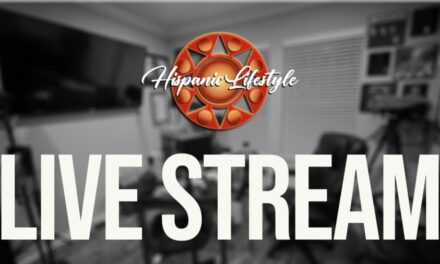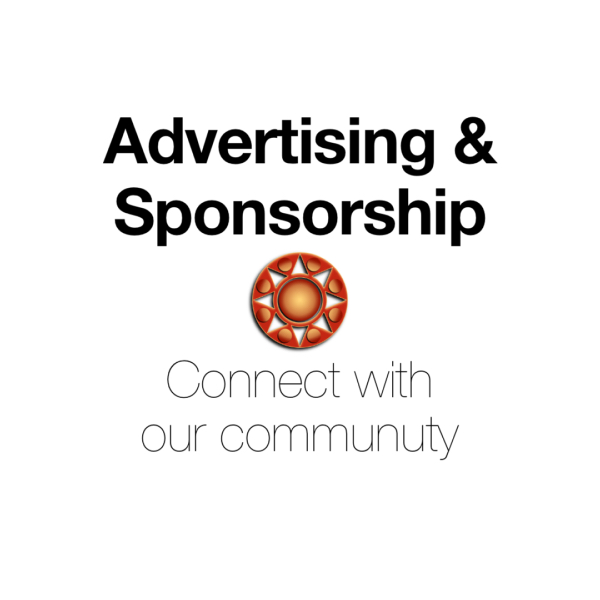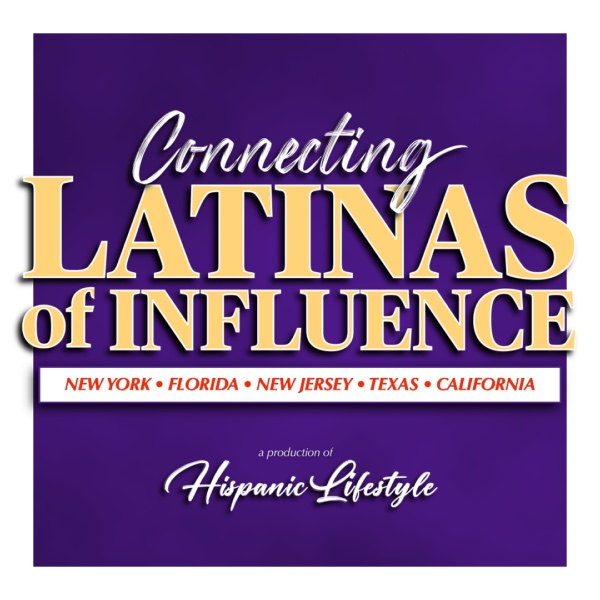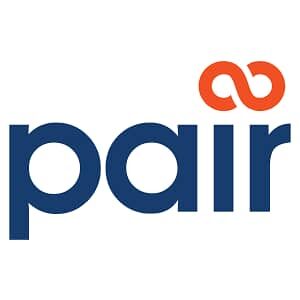
Books | Addict Nation: An Intervention for America
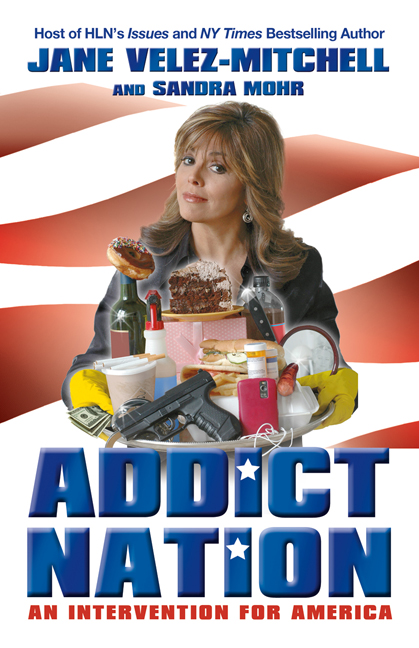
New book by Jane Velez-Mitchell, Addict Nation: An Intervention for America
In her New York Times bestselling book, iWant, Jane Velez-Mitchell, host of HLN’s Issues, detailed how her addictive personality infiltrated her life and led her to over consume everything from alcohol to food to work to spending. Now, in her latest book, Addict Nation: An Intervention for America (HCI Books — $24.95 – February/March 2010), in her trademark no-holds-barred style, Velez-Mitchell targets our entire culture, calling it a Nation of Addicts – arguing that Americans have collectively become dependent on and devoted to certain
dysfunctions (including obsessive cleanliness, cruelty, sexual exploitation, food addiction, prescription drug dependency, overpopulation, overconsumption, war, incarceration, and crime).
When enough people are hooked on the same substance or behavior, it crosses the line into a cultural addiction. According to Velez-Mitchell, media, government, and the private sector are also culturally hooked on these destructive customs and therefore justify, romanticize, and promote them—in essence, becoming “pushers.”
In Addict Nation, Jane Velez-Mitchell calls attention to the collective denial society lives in about its addictions and overconsumption and confronts America to look at its bad behavior for what it really is: compulsive and self-destructive. In orders, Addict Nation is an intervention. It will shock addicts out of denial and inspire them to get help and get well.
Excerpt from the book, Addict Nation: An Intervention for America
Introduction:
Why This Book Will Change Your Life
The other night I went to a charity event at a sprawling private home in the hills of Los Angeles. I parked in front of a house down the block, got out of the car, and found myself staring at a distinctive front door. With a start, I realized, “Hey, that’s the place I hit bottom fifteen years ago.” Yep, it was through that fancy door that I was carried out of that house over someone’s shoulder . . . in an alcoholic blackout. I remembered the house only because a friend of mine had lived there and I had visited it often . . . until that wild, out-of-control night.
It was great to be confronted by that memory because it put in sharp relief how much better my life has become in the decade and a half that I’ve been sober. Standing there in the near darkness, those crazy years when my drinking was out of control sped through my mind like a movie stuck in fast forward.
As I walked away and headed toward the party where a chic Hollywood crowd was gathering, I felt immense gratitude. I no longer had to worry about what inappropriate thing I might do or say as the night wore on. I knew that the next day I would remember everything that happened at the party. I knew I would not have to phone anyone the next morning for a “damage assessment” nor would I have to apologize for anything I did or said. There would be no embarrassment or remorse or worry. In other words, I felt completely free. More than anything else, that’s what sobriety is: FREEDOM!
Why am I telling you this? Because I want you to experience that same freedom! Right now you might be thinking, The nerve of that Jane, to assume whoever’s reading this book is an alcoholic! No, I’m not jumping to that conclusion, but I am making a pretty safe bet that you are an addict. Why? Because virtually everyone in America is hooked on something. We are a nation of addicts! In Addict Nation, you’ll learn how you and I, and other Americans, are being lured into a slew of addictions that are supremely self-destructive. They’re making us high. They’re making us overweight. They’re keeping us constantly distracted. They’re trivializing our most important relationships. They’re putting us in debt. And they’re destroying our natural world. We’re all becoming slaves to our worst impulses. We are giving up our freedoms.
Sadly, what’s happening is the exact opposite of what our Founding Fathers had in mind. The United States of America was created precisely to celebrate “life, liberty, and the pursuit of happiness.” Freedom of choice is the underlying premise of our society. That means we get to decide how we live our lives, how we spend our money, what we eat and wear, and how we relax in our “free” time.
I love the freedoms I have as an American, and I never take them for granted. In fact, that’s why I’ve written this book. It’s crucial that we Americans confront this huge addiction epidemic that is robbing us of our ability to make rational choices in our own true self-interest.
Enslavement comes in many different forms. It’s not always someone pointing a gun at you or building a wall to keep you where you are. There is also psychological and emotional bondage. If you know intellectually that you are on the verge of making a bad choice, and, still, you cannot stop yourself, then you are just as enslaved as if somebody were pointing a gun at you. Either way, you do not have what it takes to say no to self-defeating behavior.
Addiction is determining our behavior.
We’re all familiar with the obvious addictions: drugs and alcohol. Those obsessions have been with us since Adam first met Eve. They plucked their first grapes and discovered the mind-altering beverage that resulted from the fermentation process. There’s even the occasional reference to alcoholism in the Bible. Addictions have gone forth and multiplied since biblical times. We now have many more temptations to seduce us into dangerous and even deadly choices. Symbolically, the snake may have first starred in the role of pusher by beguiling Eve into eating the apple, who passed it to Adam, getting them both thrown out of Eden. Today, there are many complex forces not unlike the serpent that beguile us into bad behavior for their own purposes—usually for profit and power.
Increasingly, almost everything being presented to us as a “free choice” is being packaged and sold in a way that’s designed to get us hooked in order to guarantee that we keep coming back for more. To offer just one obvious example, there’s increasing evidence that fast food is addictive, which would go a long way toward explaining our obesity crisis. The psychologically addictive component is the constant drumbeat of advertising to encourage fast food consumption, combined with its easy availability. The physically addictive component is fast food’s high levels of sugar, salt, and fat, ingredients now being tied to compulsive consumption.
For another example, one needs look no further than our current foreclosure mess. Mortgages were offered to millions of people who really couldn’t afford them. Predatory mortgage brokers got their cut and didn’t seem to care what happened to the house or the homeowner after they sealed the deal. These seductive lending policies triggered an addictive binge of spending and overconsumption as people who bought homes above their means proceeded to furnish them using high-interest rate credit cards. Eventually the house of (easy credit) cards crumbled. We were culturally intoxicated on a cocktail of complex lies, and now we’re all reeling from the hangover. All except the very rich, that is. They just keep getting richer, as America’s wealth divide continues to widen. In almost every case, there is huge money to be made on seducing you into addictive behavior. Ask yourself, Do I really want to be a slave, existing just to make someone else rich and powerful? No, you say? Well, then, read on.
Freedom of choice implies that you have the free will to make a rational choice. Freedom of choice implies you are capable of deciding what is in your true self-interest. Addiction messes with that equation. Addiction, by definition, is being powerless to say no to a particular substance or behavior that generally gives you a quick hit of pleasure that often results in long-term pain or other negative consequences.
The big issue is addiction.
Virtually every story I cover on my HLN TV show Issues with Jane Velez-Mitchell is, in some way, shape, or form about addiction. Let’s examine some of the biggest stories of our time. In each case, the BIG ISSUE is addiction.
Michael Jackson, Anna Nicole Smith, DJ AM, Heath Ledger . . . these are just a few of the tragic headliners who’ve showcased the nation’s epidemic of prescription drug addiction. There’s even a hit show for high-profile drug addicts: Celebrity Rehab with Dr. Drew. Kirstie Alley has become the national symbol for our collective battle with obesity. She spilled her guts about her rollercoaster ride down and up the scale to Oprah, who could relate because she too has waged a long and very public losing battle with her weight. Could these two supertalented women perhaps be addicted to food? With nineteen kids and counting, the Duggars are clearly hooked on making babies . . . and getting on television. Ditto for the Octomom, plus John and Kate. With a baker’s dozen of alleged mistresses, is it really a stretch to wonder if Tiger Woods was hooked on sex?
Okay, those are all famous people. So what? Do you really think stars are the only ones who grapple with compulsions like serial infidelity, overpopulation, pill popping, and gluttony? No. The only difference between stars and the rest of us is . . . their addictive behavior seems somehow more glamorous, more fascinating. And we all get to watch.
Addiction often comes packaged as a harmless distraction.
What’s surpassed baseball as our number-one national pastime? Crime. America’s extreme fixation on violence and murder has reached epidemic proportions. A beautiful Tennessee TV news anchorwoman is raped and murdered while minding her own business in her own home, a Georgia mom is abducted while walking down a country road near her parents’ house, a little girl is kidnapped near a bus stop in California and held for eighteen years while her captor rapes her repeatedly, fathering two children by her. It seems every day brings a new horror story. And we’re hooked! We want to know every last detail!
On my show Issues, I talk about our culture of violence and insist that, as we cover these stories, we analyze the root societal causes of crime and look for solutions lest we become just another showcase for the pornography of violence. Ironically, addiction itself is one of the most common causes of crime. People who are drunk or high on drugs are capable of monstrous violence they would never even consider while sober and often rob to support their habit. In fact, the title of this book came out of a recurring segment on my show called “Addict Nation,” where my expert panel and I discuss how addiction is the underlying theme of so much disturbing news.
America’s crime addiction can be seen in our obsession with the mass shooting du jour and the wild televised car chases. We all know how those car chases end. The suspect is always caught. Yet, we remain glued to the live coverage, drinking in the “suspense.” After drugs, booze, and food, crime is perhaps our most potent and pervasive form of escape. You may now be thinking, What’s wrong with a little escapism? Is that really an addiction?
Escapism is the root cause of all addiction. The motive for any addictive behavior is always the same: to stuff down and escape painful feelings and unpleasant truths by altering one’s mental and emotional state with the addictive substance/behavior. Addiction is all about altering reality by “using” a substance/behavior to tweak one’s mood. The drug of choice may vary from addict to addict, but the purpose of using is always the same. Different addicts drive different cars, but they’re all heading to the same destination. Oblivion.
Human beings are capable of becoming addicted to virtually anything—from plastic surgery to tattoos to texting. I can tell you from personal experience that addictions jump from one substance to another. When I gave up booze—voila, sugar popped up to take its place as my new obsession. Over the years, I’ve given up alcohol, drugs, sugar, meat, dairy, diet soda, violent movies, and a variety of other bad habits. But new addictions just keep cropping up. That’s because all the behavior is driven by the same motive: to “check out,” to numb, and to escape.
You’re an addict when your behavior turns into a never-ending cycle of craving, bingeing, remorse, and withdrawal. That hangover, or withdrawal, then triggers a new bout of craving, and the cycle begins again.
Here’s one of my addictive cycles. Every night when I leave work, I feel the urge to eat something. No problem there. It’s what I crave that’s the problem. As a vegan, I’m pretty much locked in to a healthy diet. You have to search long and hard to find vegan junk food. But, hey, I’m an addict. I will do that! I will systematically hunt down the most fattening, vegan dessert available anywhere in the tri-state area. When I find it, I eat it quickly, voraciously, looking over my shoulder as if somebody will take it away from me if I don’t gobble it down fast. About five minutes after the last bite, the remorse kicks in. Why did I just do that? Didn’t I just devour the same amount of calories it takes me an hour and a half to burn off during a session of thinly disguised torture called “hot” yoga? Why couldn’t I have just had another serving of cantaloupe instead?
Sometimes addiction is called “taking our comfort.” When I’m eating the cake, a voice in my head tells me, “I’m entitled, I’ve earned it. I’ve worked hard all day. And it tastes so good! Damn the consequences!” When I get into the remorse phase minutes later, another voice in my head says, “Who was that person who wolfed down that vegan cake faster than you can say organic fair-trade agave nectar?” As an addict, I have a committee living in my head whose members love to argue and wage power plays.
Ultimately, I have had to counteract that addiction by simply giving up sweets entirely, even so-called healthy sweets like maple syrup, molasses and, yes, agave nectar. Now, I identify myself as “an alcoholic and a sugar addict.” Being an addict, it’s easier for me to give up the addictive substance entirely rather than try to negotiate with it. Bye-bye added sugar in all its forms. I simply cannot do sugar or booze in moderation. Put another way, I cannot use those substances successfully.
Any addiction is ultimately self-destructive, even an addiction to something that—in moderation—is good for you, like exercise.
So, what kind of behavior is considered okay? What’s not? It depends on the cultural norms of the moment. Suddenly, we’ve got pot stores popping up all over California and Colorado. The baby boomers, most of whom smoked pot as teens, grew up, got into power, and decided, “Come on, there are more important battles to wage than trying to stop people from lighting up, especially if they’re sick and need some pain relief.” Society is constantly reassessing its tolerance for certain addictive behaviors, declaring war on some addictions while encouraging others.
Remember the sixties? “If you can . . . you weren’t there,” is the tired joke. The sixties positively romanticized the use of psychedelics. Then the nineties demonized them. The fifties was one long love affair with smoking. By the nineties, cigarettes were considered gross, inspiring attitudes like “I could never date someone who smokes!” The disco seventies, where hot pants and platform shoes were the rage, looked askance on obesity. Today, there’s an ill-advised fat acceptance movement. Our culture has lost its tolerance for drunks and smokers, but we still rationalize obesity as a lifestyle choice. Being morbidly overweight is an addiction to food, just like smoking is an addiction to cigarettes and getting drunk is an addiction to alcohol. To accept obesity unquestioningly is really to be an enabler of the problem.
Whether it’s the neighbors’ annual Oscar party or Karaoke Wednesdays, human beings are pack animals. We move in groups from one behavioral landscape to another. We’re always adjusting to the shifting sands of cultural attitudes. Simply put, America lurches from addiction to addiction, stamping out one bad habit only to see others take its place.
When enough people are hooked on the same nasty habit, it crosses the line into a social contagion.
Our entire nation is addicted to a slew of self-destructive, compulsive actions. You may be thinking, Well, that’s why we have the government, the media, and—yes—even big business. They help us fight these terrible social plagues. fuhgeddaboudit! The media, the government, and business are often the enablers . . . even the pushers! The media relays and popularizes the bad habit, the government subsidizes it, and big business squeezes a buck out of it.
When somebody’s absolutely got to have something, that’s called demand. Addiction creates enormous demand, and there are massive profits in supplying what we crave.
The more widespread an addiction gets, the more it seems normal.
An extreme example of a dysfunction that has become accepted as normal in one part of the world is the burka women are forced to wear in some parts of the Middle East. I once had to try on a burka as part of a news story I was doing on the oppression of women. The second I put it on I felt like I was drowning. I couldn’t see to the left or right of me. God help me if I had tried to cross the street. I probably would have been sideswiped by a bus. It was torture. I kept it on for three or four minutes, and then I just couldn’t take it anymore. I ripped that freakin’ burka off, threw it on the floor, and thanked heaven that I was born in America and not in the hills of Afghanistan. The burka is beyond oppressive. It’s lunacy! But for the Taliban, it is their “normal.”
Similarly, in America, self-destructive compulsions, like violent crime, war, overconsumption, overpopulation, prescription drug abuse, food addiction, Internet porn, and obsessive use of antibacterials are so widespread as to seem “normal.” So, we accept the behavior and cease to put it through our normal screening process. The bad habit gets a pass because “everybody’s doing it!”
On Issues I try to bring attention to the horrors of cultural addictions like overconsumption. However, I am often left disillusioned. Some of the smartest people I encounter don’t seem at all bothered by America’s pathological wastefulness. They react like there’s something a little strange about me that I’m so concerned. Why? As we know, addiction can afflict anyone regardless of their income, education, or intelligence. America’s best and brightest, despite their brains and position of privilege, are also addicts, hooked on the very same social addictions as the rest of us! And, because they’re smart, they can whip up the best excuses to justify our worst lifestyle choices.
If I go out to a fancy restaurant with a successful New York executive, the chances are that a good percentage of the food that comes to our table will be discarded. It’s fashionable to order food and not eat much of it. Successful people do this all the time. Many women, especially, are brought up to never finish the last bite. If they leave half the plate, they feel even more refined. It’s part of the mentality that you can never be too rich or too thin. As I watch the waiter take away a plate of barely eaten food, along with the rolls of untouched bread in the basket, all destined for the garbage bin, I think of a recent study. It says America could feed over 200 million adults every year, just with the food that ends up in our garbage cans. As we speak, 1 billion people are going hungry worldwide, according to the United Nations. While my more successful friends certainly feign concern over that jaw-dropping imbalance, they actually seem more disturbed by my newest quirk. Now, when I go out to a restaurant, I take all the uneaten bread from the basket in the center of the table with me when I leave. I either give to a homeless person or feed it to the hungry birds I’m always passing on the street. Apparently, this makes me a freak.
Maybe they’re not so smart after all. This wastefulness is part and parcel of the addiction of overconsumption. We’re hoarding for ourselves more than we can ever possibly consume, while others starve. It’s obscene. But nobody is addressing the addictive nature of this behavior.
The most dangerous addictions are the ones we fail to even diagnose as addictive behavior.
If you have an undiagnosed addiction, it’s like not knowing you have a fatal cancer growing inside you. You’re flying blind. You can’t combat a problem until you correctly diagnose it. Right now, America is misdiagnosing some of its biggest problems, like obesity, materialism, and crime. It’s no wonder they’re just getting worse!
One thing we know about addicts: they don’t listen to reason. A craving is a very powerful thing that has a force of its own like a hurricane or a tsunami. Have you ever tried to get a friend to stop smoking by telling them they’re liable to get cancer? Ha! Reason is no match for a full-blown addiction. This is why addicts are known for being stubborn and defiant when somebody tries to stop them. When you scold a drunk for drinking too much, they’re apt to storm out of the house and head toward the nearest bar. Well, the same thing applies to our social addictions like crime, materialism, excessive cleanliness, and gluttony. This is precisely why Americans keep getting fatter as we lecture everyone about the dangers of junk and fast food.
When it comes to combating addictive behavior, we are wasting taxpayer dollars trying to engineer strictly political solutions.
Politics is tone deaf to the psychological and emotional underpinnings of America’s worst problems, even as it throws billions of dollars at them. If you give a heroin junkie a wad of cash, it’s not going to help him kick his habit. Au contraire.
Our healthcare debate is a perfect example. We keep talking about getting everybody insured. How about tackling the root cause of so much of the illness in America? Addiction! Overconsumption of alcohol is tied to an increased risk of breast cancer. The addiction there is alcoholism. Smoking has long been the nation’s number-one preventable killer. Smoking is an addiction. And, now, obesity is creeping up and could ultimately surpass smoking as the country’s leading preventable killer. Obesity is the result of food addiction.
Nobody’s talking about this. If the government took better aim at those preventable killers, we might all be willing to embrace universal health insurance because it wouldn’t be so damn expensive!
The same concept applies to America’s other big issues, like prescription drug abuse, sexual exploitation, pollution, poverty, overpopulation, even crime and war. We must recognize that addiction is at the heart of these problems. We—as a culture—are hooked on these malignancies.
Addicts have the ultimate sense of entitlement. Nothing will stop them from getting their drug of choice! That’s the addict mindset.
We can define addiction. It has certain clear-cut characteristics:
* an endless cycle of craving, bingeing, remorse, and withdrawal;
* a progressive pattern, leading to invariably uglier and more destructive behavior until a “bottom” is hit;
* obsessive rituals and elaborate paraphernalia;
* defiance and denial in the face of evidence of the wreckage caused by the addiction;
* strenuous and imaginative rationalizations to justify the addictive behavior;
* the “user” is invariably paired with a “pusher.” One is exploited while the other profits.
Addiction spawns its own unique culture. In every addict’s world, there is the “pusher” and, beyond, the “cartel,” which reaps the profit. This even applies to Chardonnay. Back when I was drinking, I felt like I was personally supporting the entire economy of France! My American Express bill was so heavy I did bicep curls with it. Opening the bill, I would have terrifying flashbacks of yelling, “Champagne for everyone!”
Addictions are expensive.
That holds true for our national addictions to crime, war, sexual exploitation, animal exploitation, cleanliness, overconsumption, materialism, drugs, and food. In each of these categories, there are billions, if not trillions, of dollars at stake. Anyone who seeks to expose the addictions at the heart of these problems will provoke the wrath of powerful industries and government bureaucracies that perpetuate the status quo for their own gain.
If there were no prisons, what would happen to those corporations, unions, and government bureaucrats whose sole purpose is to supply and police those prisons? One of America’s biggest “growth industries” is private prisons and related companies that have discovered a way to “cash in” on arresting, prosecuting, housing, feeding, and clothing inmates. How can they keep “growing” their business? By creating more criminals of course. (I will explain in one of the following chapters precisely how they do this.)
Hollywood also profits off of our culture of violence, selling the American public tickets to highly stylized assaults, car chases, rapes, and murders, glamorizing it all in the process.
Food addiction is making billions for fast-food manufacturers and agri-business who are protected by their allies in the U.S. Department of Agriculture (USDA) and subsidized by the U.S. government.
War addiction is fueled by the military-industrial complex. The Halliburtons and the Blackwaters make the news but many mainstream companies also profit magnificently from war.
Prescription drug addiction is encouraged by the secretive but powerful pharmaceutical industry that controls government decisions through its powerful lobby.
In all of the above cases, the people funding these powerful interests are you and me . . . the taxpayers and consumers. We, the people, are doubly exploited and victimized. We have to live with the albatross of addiction and we make our enslavers rich in the process! It’s a really bad deal.
Ironically, if all us consumers/taxpayers joined forces to demand change we, as a unit, would be more powerful than the most powerful industrial cartels. But first, the American people have to “hit bottom” on these cultural addictions and feel the desire to change!
Addiction is progressive.
A fundamental truth of addiction is that if it’s not confronted and treated, it will invariably get worse. That’s because the addict’s pleasure receptors become skewed and require an ever-increasing amount of the same substance/behavior for the high to kick in. In other words, addicts are insatiable and will always need more of their “junk” to get off and to stay high. So, the addict’s predicament is always getting more perilous.
In this book, I will offer you a view into our world from an addict’s perspective and suggest where we might be headed. If you think things are bad now, imagine an America even more defined by life-threatening obesity, pervasive drug dependency, insatiable sexual perversion, ever more sadistic crime, widespread incarceration, and unnecessary war.
That’s where we are headed. I cover all these stories on my show Issues, and I see firsthand how it’s all getting worse!
Do we really want a nation filled with citizens who are overwhelmingly obese, drug addicted, hooked on porn, either criminally minded or potential victims? Do we really want to live in an America where a huge swath of our national resources is spent on incarcerating our own citizens and waging war on nameless, faceless strangers in foreign lands?
The choice is ours. Addict Nation is designed to be a blueprint for change. But first, we need to wake up to what’s happening.
This is an intervention!




